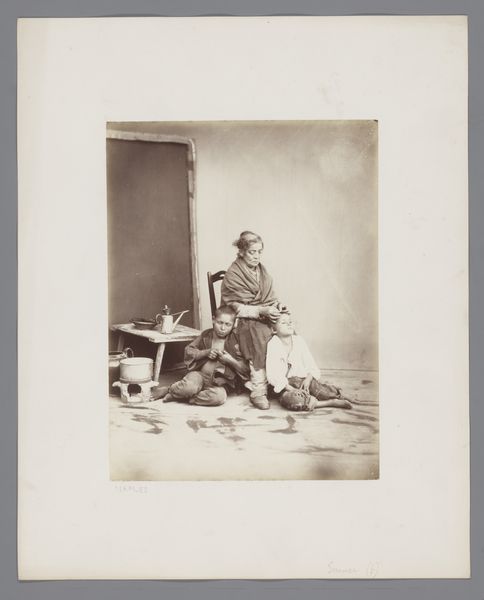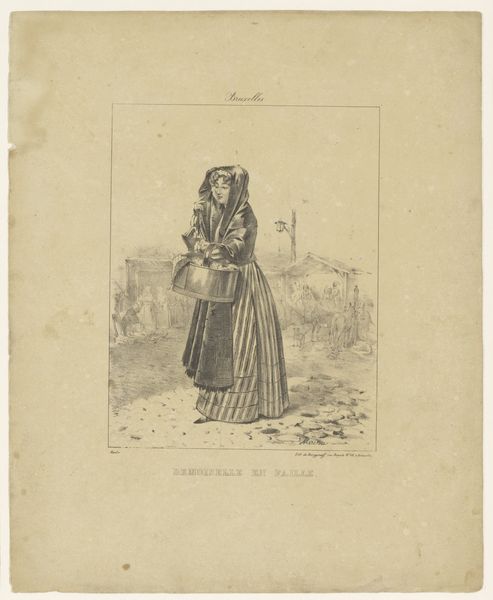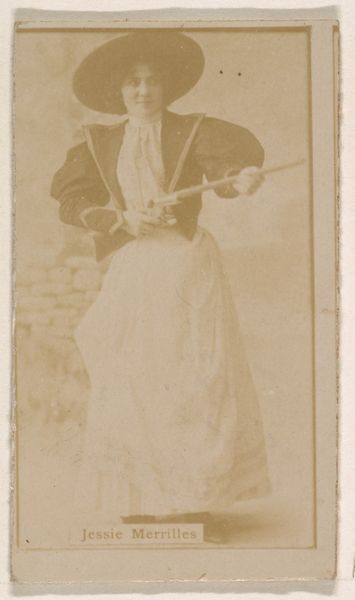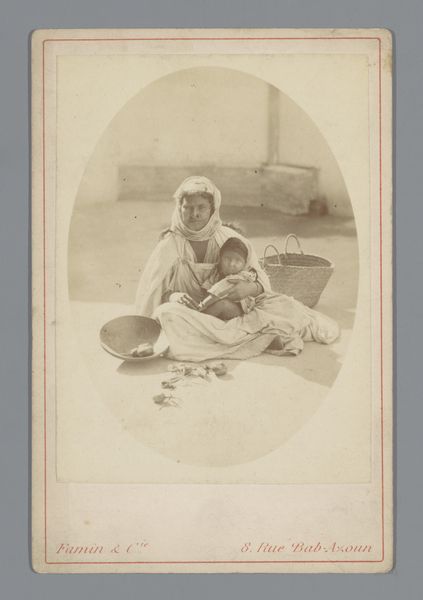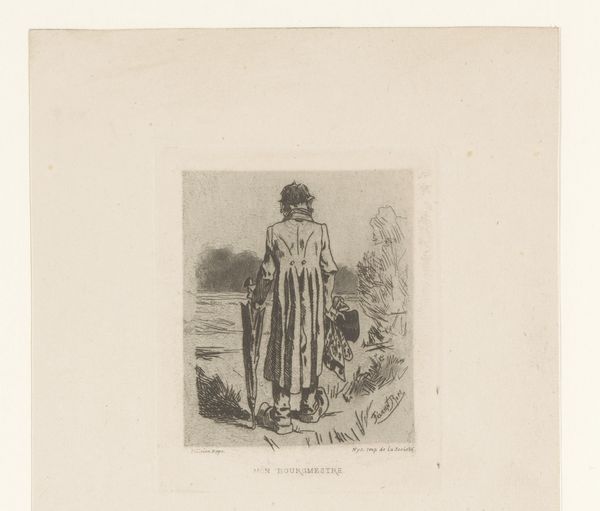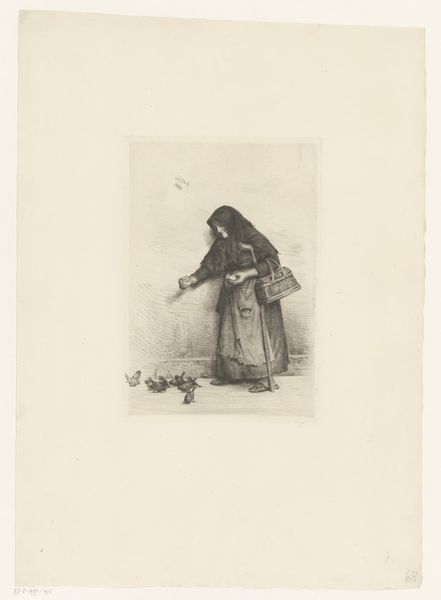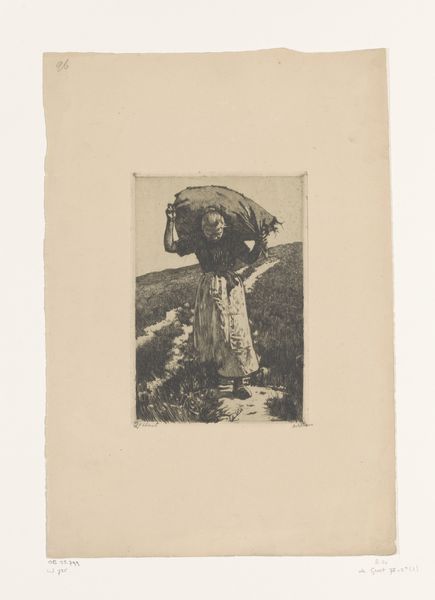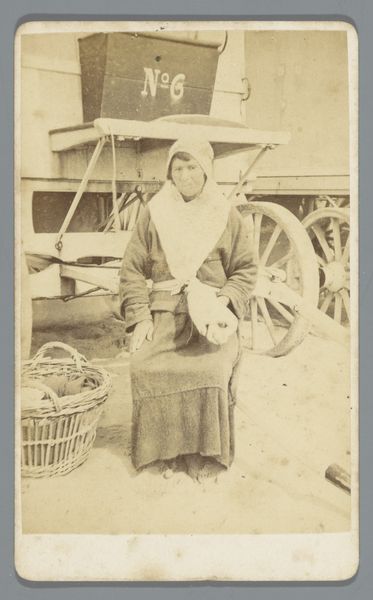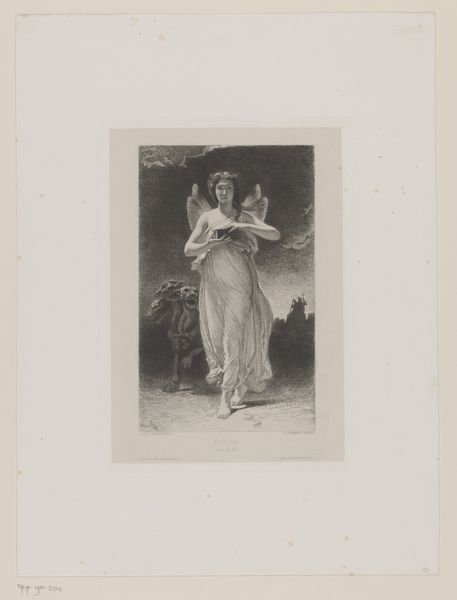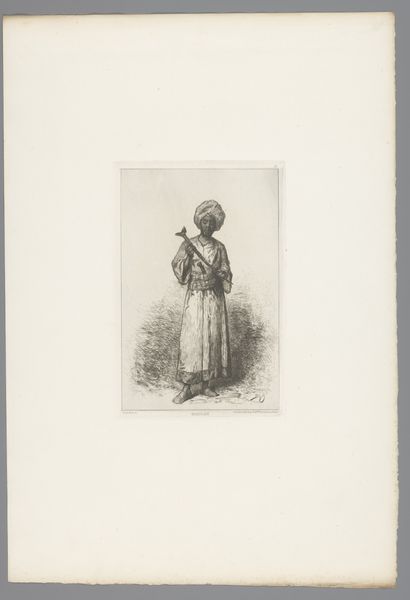
#
photo of handprinted image
#
aged paper
#
light pencil work
#
ink paper printed
#
light coloured
#
personal sketchbook
#
sketchbook drawing
#
watercolour illustration
#
sketchbook art
#
watercolor
#
sea
Dimensions: height 280 mm, width 201 mm
Copyright: Rijks Museum: Open Domain
Editor: Here we have "Vissersvrouw," or "Fisherwoman," created in 1881 by Paul Mathey. It's a watercolor illustration on paper. I'm struck by the woman's determined gaze and the bleakness of the landscape. What kind of story do you think Mathey is telling here? Curator: It's interesting to consider the sociopolitical context of this work. The late 19th century witnessed growing social consciousness, and artists often depicted the lives of working-class individuals. How does Mathey portray this fisherwoman, and what statements, if any, do you think he makes about her social standing? Editor: She seems resilient, certainly. The worn clothing, the fishing net – these details suggest a life of hardship, but her gaze is direct and unwavering. She's not romanticized; she's presented with a sort of stark realism. Is this type of representation common at the time? Curator: Precisely. The Realist movement sought to depict life as it was, often focusing on the less privileged. Consider the burgeoning industrial revolution. Did this type of art function as a commentary or critique of this social shift? And to whom was it targeted? What do you think this illustration would communicate to an urban, bourgeois audience? Editor: Perhaps it would evoke empathy or awareness, or even a sense of guilt? The city dwellers benefit from her labor, but likely without any real understanding of her life. I wonder what role art played in bridging that gap, in giving a voice to the marginalized. Curator: Exactly. This piece also provides us a snapshot of societal expectations placed on women and their vital economic contributions at this moment in history. It gives insight into how individuals from diverse backgrounds saw and comprehended each other. How different or similar do you think the contemporary vision would be? Editor: This artwork definitely opened my eyes to the socio-political landscape of 19th-century France, which I did not expect. Curator: It's precisely these visual dialogues that makes art so enriching and worthwhile.
Comments
No comments
Be the first to comment and join the conversation on the ultimate creative platform.


